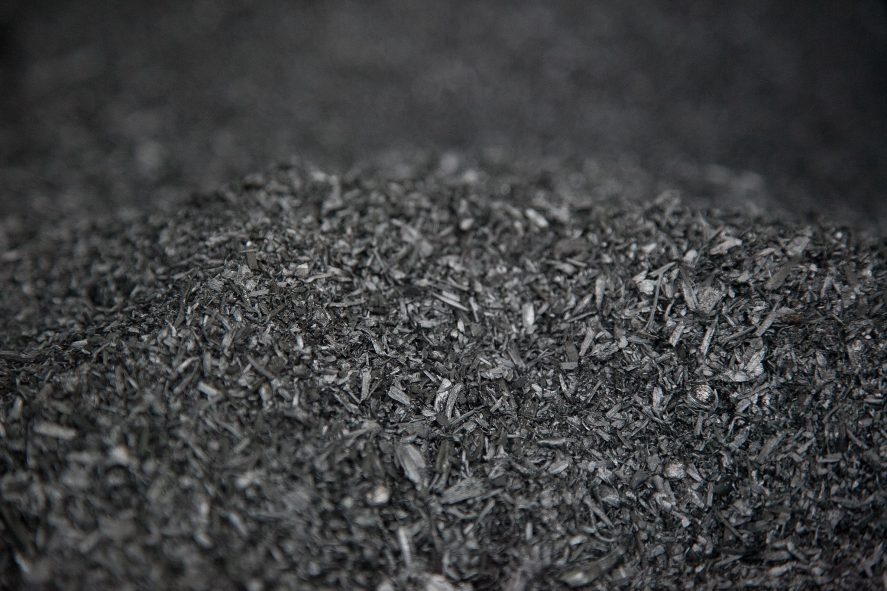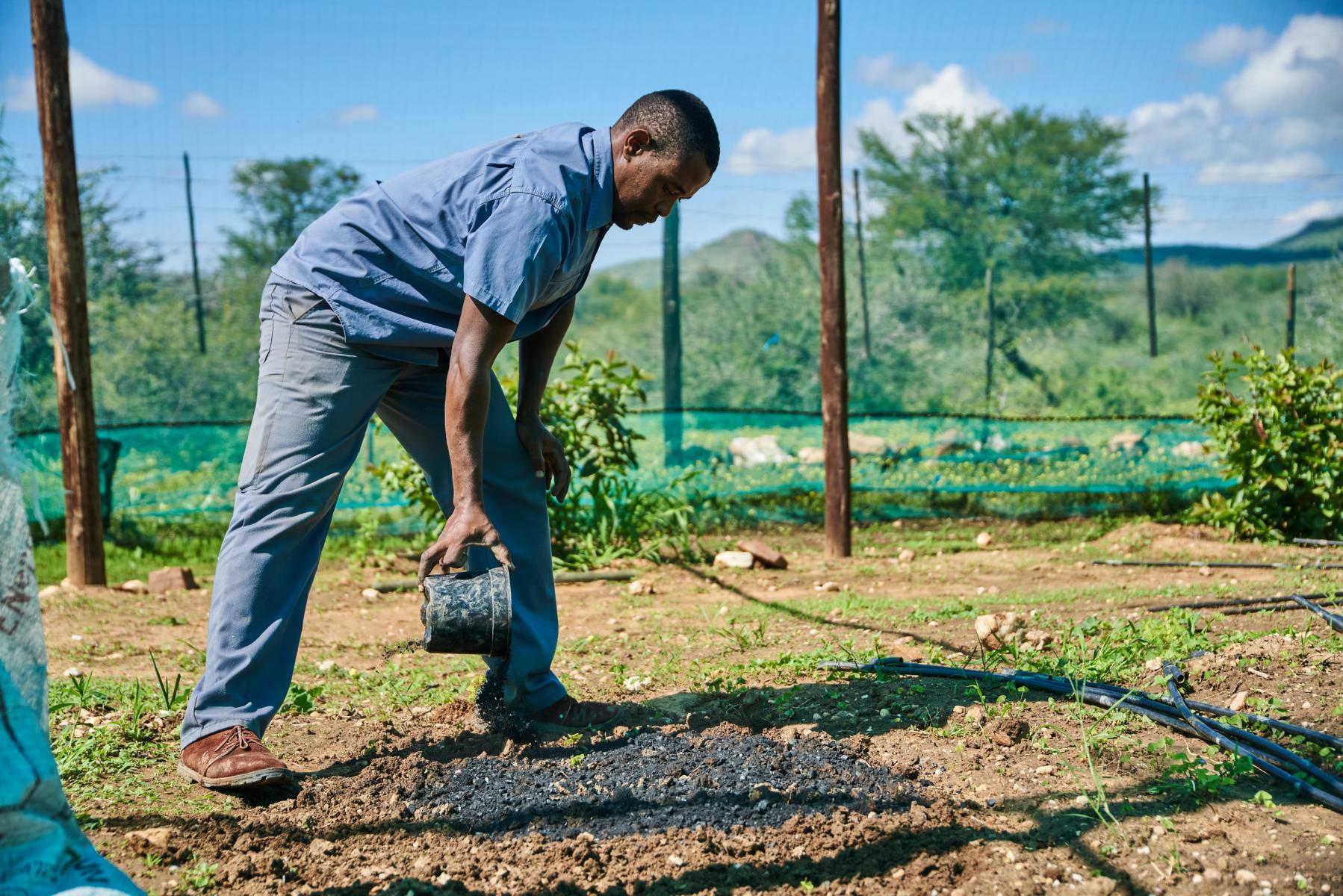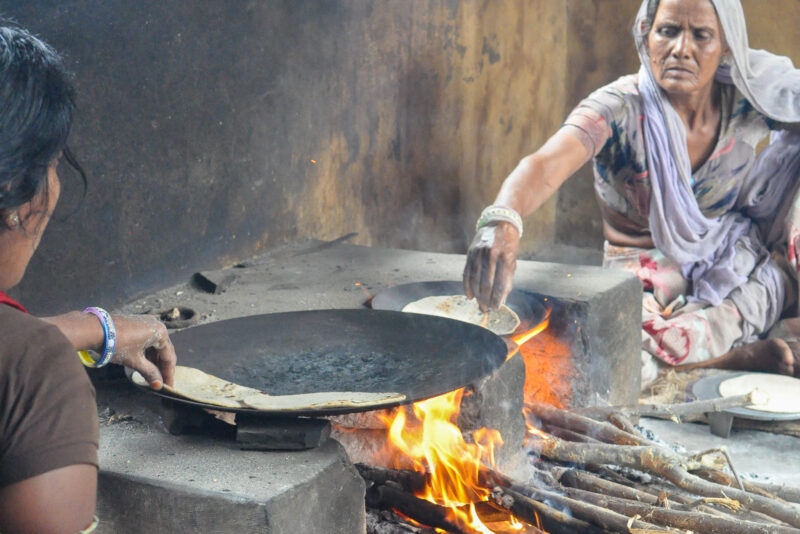How Biochar Can Help Renew Degraded Tropical Soils

Agricultural soils around the world are under increasing pressure as urbanization covers once prime farmland with concrete and asphalt while intensified agricultural production degrades soil fertility. Yet even as their soils’ fertility declines, farmers around the world will be expected to feed more people than ever before as the global population grows to more than nine billion by 2050.
Soil fertility relies not only on the quantity of nutrients present in the soil but also on the capacity of the soil to retain those nutrients despite natural forces that would strip them away. The organic component of soil, called soil organic matter (SOM), plays a major role in the provision and retention of agricultural nutrients. Farmers can improve the fertility of their soils by adding organic soil amendments like compost, manure, and biochar.
Tropical conditions burn through soil organic matter
Unfortunately, many soils, especially in the tropics, lack adequate quantities of SOM to maintain soil fertility. Decades of increasingly intense cultivation coupled with a growing reliance on inorganic fertilizers have coincided with a decline in SOM in much of the Global South. Soils robbed of their SOM cannot hold agricultural nutrients against leaching, meaning those nutrients are unable to contribute to crop production. Farmers may continue to apply nutrients in the form of inorganic fertilizers but less and less of those nutrients will be available to support plant growth.
SOM decomposes rapidly in the tropics due to the high temperatures and/or high levels of precipitation. Tropical soils regain their fertility over the course of long fallows, during which natural vegetative regrowth regenerates SOM. In much of the tropics, slash and burn agriculture is a traditional method of maintaining soil fertility. In slash and burn, decades-long fallows are used to restore SOM in between short periods of crop cultivation.
Improving tropical soil fertility with biochar
The Terra Preta soils of the Amazon are an exception to this boom-and-bust cycle of SOM in the tropics: in these black earth soils, the practices of indigenous peoples led to the accumulation of pyrolyzed carbon, also known as biochar (a term used to refer to charcoal used as a soil amendment). Biochar can be produced using a wide range of kilns and small quantities are also a byproduct of fires used for cooking and land clearing. Biochar can persist much longer in the soil than other forms of carbon, meaning its effects are longer lasting than those of other organic soil amendments.
Biochar persists in soil even under warm and moist tropical conditions, allowing the soil to retain nutrients and water similarly to other organic soil amendments. Its high cation exchange capacity, or CEC—a measure of the total amount of positively charged ions a soil can hold—allows it to retain agricultural nutrients and prevent them from being lost to leaching due to rainfall. The small pores of the biochar act as sponges, holding nutrients and water and creating an ideal microclimate for beneficial soil microorganisms.

A farmer applies biochar to his soil. (Photo by GIZ/Tim Brunauer, CC BY SA 4.0)
Most biochar has a basic pH, meaning that it can help to raise the pH of the often-acidic soils common in the tropics. Moderating acidic pH greatly improves soil conditions for crops by making soil nutrients more available for plants to use.
These characteristics make biochar a useful soil amendment for improving crop yields in the Global South, where increasing population density, urbanization, and cropping intensity have rendered soil fertility management strategies requiring lengthy fallows impractical.
Emphasizing soil organic matter in agricultural development
A single-minded focus on inorganic fertilizers is no longer tenable. New approaches are needed simply to maintain existing levels of production, and far more will be needed to intensify production to the levels needed to feed more than nine billion people by 2050.
Equipped with tools like biochar, agricultural development practitioners around the world, and especially in the tropics, should emphasize increasing SOM content so that agricultural soils can retain the nutrients and water necessary to grow crops and feed growing populations.
Whitman Barrett is a PhD student in the Soil and Crop Sciences Section of the School of Integrative Plant Science at Cornell University.
Featured image: Biochar. (Photo by the Oregon Department of Forestry, CC BY 2.0)





